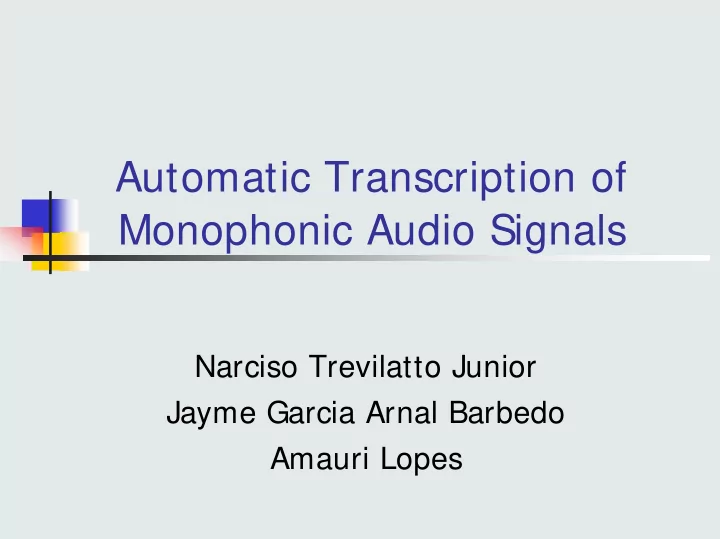

Automatic Transcription of Monophonic Audio Signals Narciso Trevilatto Junior Jayme Garcia Arnal Barbedo Amauri Lopes
Context � Potentially Usefull for Musicians and other Professionals of Music � Good Results for Monophonic Signals � Treating Complex Signals is Still a Problem � This Work: First Step of More Sophisticated Techniques
Fundamental Frequency Estimation � Autocorrelation Method f = F s n 0 d � f0 Tracking � Window size of 50 ms � Hop size of 25 ms � Detects frequencies above 40 Hz
f0 Extraction � Time Expansion to Eliminate Harmonics � Peak Selection
Frequency and Duration Estimation � MIDI number extraction � Rounding of MIDI numbers � Determination of temporal bounds of the notes
Results Sound Number Correct False I ndex I Source of Notes Detect Detect Strings 507 484 45 0.87 Wind 1805 1712 93 0.90 Speech 492 463 69 0.80 Total 2804 2659 224 0.87 I = ( CorrectNotes – FalseNotes) / TotalNotes
Conclusions and Future Work � Good results for simple audio excerpts � Do not take into account effects like vibrato and glissando � Future improvements � Use of improved techniques for harmonic rejection � Incorporation of logics based on musical theory � Extension to complex signals
Recommend
More recommend